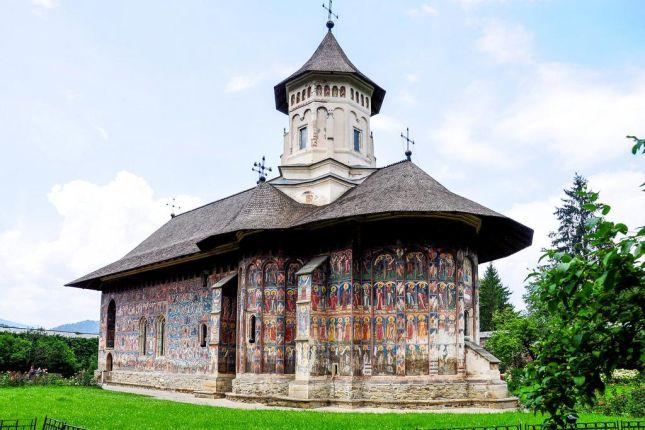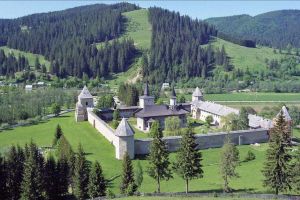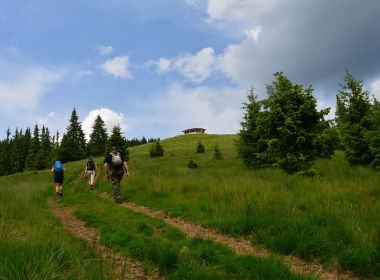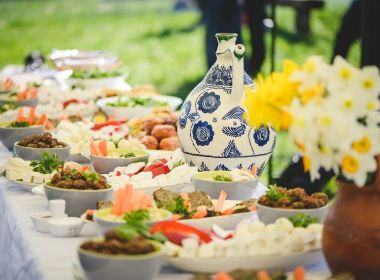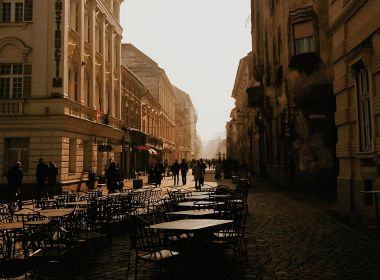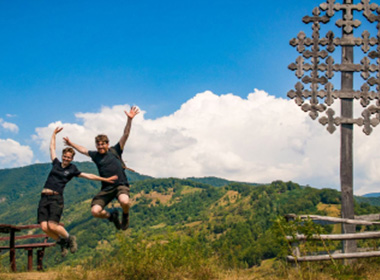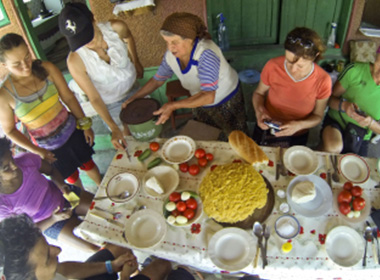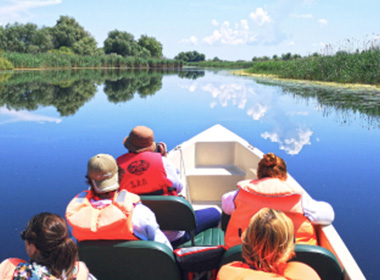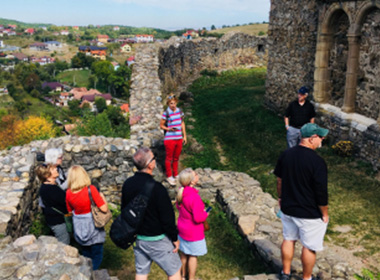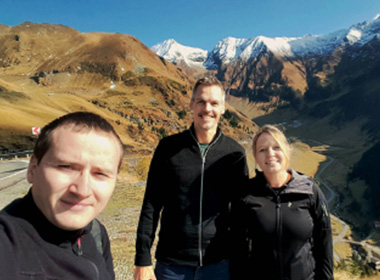Bucovina Travel Guide: 13 Things to Do in a Magical Region
The region of Bucovina in North-Western part of Romania is a mythical land where time froze in the exquisitely painted walls of its 600-year old monasteries.
The name “Bucovina” means country of beeches thanks to its many rolling hills covered with dense woodlands dotted by small, traditional villages here and there.
The region is most famous for its Painted Churches, centuries-old monasteries part of UNESCO World Heritage sites. But the holiday traditions here, lively folk music, and culinary delights rival those of Maramures and Transylvania, other famous regions of Romania.
That’s why we prepared this travel guide to give you a proper introduction to this region and help you plan your trip here.
Table of contents
- Why is this region famous?
- Planning your trip in Bucovina
- Tourist attractions in Bucovina
- 1. Admire the Painted Monasteries of Bucovina
- 2. Pay your respects at Putna Monastery
- 3. Travel back in time at Suceava Fortress
- 4. Explore Bucovina Village Museum
- 5. Breathe healthy air inside Cacica Salt Mine
- 6. Be out in nature at Vatra Dornei
- 7. Shop for black ceramics in Marginea village
- 8. Admire painted eggs... what?
- 9. Go on a ride on Moldovita steam train
- 10. Drive on the scenic Transrarāu Highway
- 11. Go on village walks or hiking
- 12. Discover the folk traditions in Bucovina
- 13. Enjoy traditional hospitality and cuisine in Bucovina
Here's why you should visit Bucovina
Why is this region famous?
- Historical significance
The region earned its distinct personality throughout the Middle Ages through a long distillation process. Eventually, it became part of the larger Moldavian principality in the 14th century.
Suceava, the largest city in Bucovina, became the capital of Moldova from the late 14th to the mid-16th century and the seat of power for its rulers. The most famous of them was Stephan the Great who ordered the construction of the monasteries Bucovina is so famous for after each of his victories against the Ottoman Empire.
In the true tradition of the Middle Ages, these monasteries were fortresses, spiritual and educational centers, and trade posts at the same time. Later, when the region was placed under Austrian rule in 1775, they became the guardians of our national identity, similar to other famous Romanian churches.
In 1947, the Russian Army drew an artificial border dividing the historical region of Bucovina between Ukraine (Northern Bucovina) and Romania (Southern Bucovina), even if the mother tongue of the locals was predominantly Romanian.
- The beauty of its lands
The region’s geographical boundaries are marked by the Eastern Romanian Mountains, separating the northeastern corner of Romania from the nearby regions of Maramureș (to the West) and Transylvania (to the the South).
Among the rolling hills of Northern Moldova, you will discover captivating landscapes which make up more than 20 natural reservations and one national park. There are many forests, meadows, lakes, gorges and waterfalls to visit too.
Further East, Prut River separates the Northern part of the region of Moldova from the Republic of Moldova, now a distinct country. This was known as the historical region of Basarabia which was for a brief period part of Romania, as people there also speak Romanian and the culture is very much the same.
Besides Suceava (which also has an airport), the larger cities in the region are Gura Humorului, Radauti, Campulung Moldovenesc and Vatra Dornei.
In them you’ll find the comfort of urban life while having easy access to the breathtaking landscapes of the main mountain ranges: Rarau, Giumalau (its highest peak is Giumalău at 1858 m altitude), and Calimani. And the main tourist attractions are only a short drive away.
- The folk traditions and way of life
Locals here are very proud of their traditions and folk heritage and don't miss an occasion to show them. Each village has its own folk troupe of singers, dancers or artisans and there are many small, local celebrations throughout the year where these are on display.
The best time to see them are around major Orthodox holidays like Easter and Christmas, but
Planning your trip in Bucovina
Being a remote region in the far Northern corner of Romania and 9h away from Bucharest, I think it’s important you know some practical and logistical info before planning your visit or considering a tour in the region.
- When to visit Bucovina
Similar to asking when to visit Romania, the best time to visit Bucovina depends on what you want to do and what kind of weather you prefer.
There’s one extra note though: average temperatures are typically lower here since it’s a predominantly hilly and mountainous region. During winter in Romania it gets particularly cold with heavy snowfall. So it’s a perfect getaway during hot summers or for those looking for snowy, winter holidays.
Each season is special and has its own attraction for tourists. Peak tourist season is undoubtedly during Spring when people visit Bucovina from all over the country and the world to experience the Orthodox Easter celebrations in the unique setting the painted monasteries and its servants create.
In early Summer, hiking trails become accessible after the snow melted and it’s also a perfect time for sightseeing and outdoor activities. The months of September-October are great if you like to witness the changing of the leaves. This is also an excellent time for photography.
Winter is a double treat. You have authentic Romanian Christmas traditions and celebrations in December, similar to those going on in the neighboring Maramures region. And January is perfect for winter sports, especially skiing.
- How to get here and getting around
Getting to Bucovina is not exactly easy and if you read our Romanian public transport guide you'll see why.
The fastest option is to fly from Bucharest to the town of Suceava, the largest city here. You can go by bus or train too, but travel times will be much longer about 7-8h. Sadly, public transportation in Romania is quite slow…
By car from Bucharest it will take about 9h. On our tours we tend to split this up by stopping overnight in Brasov or Sighisoara. That’s why we ask a minimum of 4 days for this kind of tour because otherwise it’s just a bad experience with too much time spent in the car.
Although the region is not that large, you’ll need a car to move around between tourist attractions as they are scattered among small villages connected by narrow and winding country roads.
And if you consider that, just like in Maramures, tourism is is very local (meaning no official portal, online information or spoken English) then you’ll understand why the best way to visit the region of Bucovina is with a tour guide. He or she will have local connections and you won’t have to worry about getting around.
- Where to stay
You’ll find hotels only in the larger cities of Suceava or Gura Humorului. Other than that, you’ll find lots of guesthouses called pensiune or casa (similar to a B&B) many of which are on Booking.com or Airbnb.
If you choose to stay in the villages know that there aren’t any restaurants or other places to that serve meals. So it’s best to choose an accommodation with half-board.
Tourist attractions in Bucovina
Now let’s take a look at the interesting places to visit and fun things to do here. Our recommendation is to plan for at least 1,5 days here - excluding travelling to the region - cause otherwise you won’t get to experience the beauty of this part of Romania.
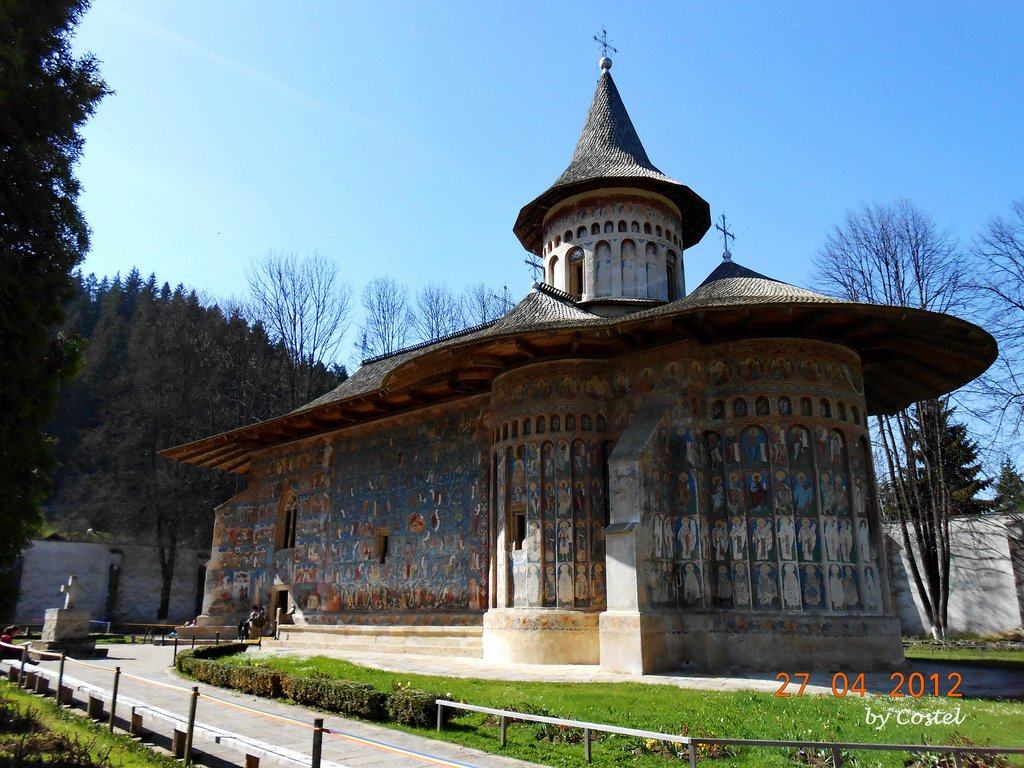
1. Admire the Painted Monasteries of Bucovina
By far the most popular attraction in Bucovina and what makes the region unique. While there more than a dozen in the region, only 8 of these have been named UNESCO Heritage sites thanks to their significant cultural value.
Local tip:all monasteries are still active places of worship and service - so, please, be respectful when visiting: no selfies or selfie sticks, laughing, posing or similar.
- 1. Voronet Monastery
Located near Gura Humorului, Voronet Monastery is often called the Sistine Chapel of the East and is the most famous of the group.
The monastery was built in 1488 by Stephan the Great to celebrate his victory against the Turks in Wallachia and honor his promise to Daniil the Hermit, who encouraged him to fight against the pagans. Today, it is one of the largest nun monasteries in Romania and an important spiritual place for locals.
Its vibrant frescoes have a unique shade of blue paint known as Voronet Blue which is remarkably well preserved even after 600 years. On the church’s exterior walls scenes are depicted from religious scriptures and historical events.
The breathtaking Last Judgement fresco, renowned for its vivid colors and storytelling prowess, attracts thousands of visitors and worshippers alike.
- 2. Moldovita Monastery
Also a nunnery, the Moldovita Monastery will impress you with its exterior frescoes which narrate tales of battles from medieval times, saints, and biblical stories, all in vibrant hues that have stood the test of time.
The exterior walls of Moldovita depict the Siege of Constantinople, where it is thought that the Divine intervention of the Virgin stopped the Persian attack. It is all an impressive testament to artistic skill and historical significance.
- 3. Sucevita Monastery
This monastery is famous for its frescoes depicting the Ladder of Divine Ascent dating back to 1601, making it the last monastery to be decorated in the renowned style you will get to know after this trip.
The monastery, also a nunnery, used to serve as a princely residence - hence the imposing fortification. Behind its thick walls, you will also find a museum of historical and art objects worth visiting.
- 4. Other Painted Monasteries
There are five other well-preserved monasteries to visit in Bucovina, each with its unique story and part to play in local history and culture.
These are the Humor Monastery, the Suceava, Pătrăuți, Arbore, and Probota monasteries, all included on the UNESCO World Heritage list and known as the Painted Churches of Moldavia.
2. Pay your respects at Putna Monastery
Yes, yes, we said there are other things to see apart from monasteries, but this has a historic importance.
This is the resting place of Stephen the Great who built the painted monasteries. He is a significant figure in Romanian history, leading 36 battles against the Ottomans and winning 34 of them. Quite a track record for those times!
Moldavians, even in modern times, revere him and consider him their national hero. It is said he chose the construction site of each monastery by shooting an arrow from a nearby hill.
Also, just 2 km from Putna, you will find the cave of Daniil Sihastrul, the hermit and Holy man who was his advisor. Prepare to be humbled by this experience.
3. Travel back in time at Suceava Fortress
A visit to the seat fortress of Moldavian rulers is a must if you want to dive deep into the region’s history.
Thanks to the recent investments from local authorities, the citadel was restored and is now one of the main attractions in the country. You can imagine what life in medieval times was like in this fortress with stone walls 3 meters thick that could resist attacks even from canons.
It has a giant bridge and a moat, an interior courtyard, rooms for the family, and even a small chapel added by Stephan the Great.
The only thing that could make this experience better would be if you chose to visit at the time of the Suceava Medieval Festival. You could even see a jousting tournament on real horses.
4. Explore Bucovina Village Museum
From the same parking lot in front of the Suceava Fortress, you can go for a quick visit of Bucovina Village Museum an open-air museum featuring traditional houses from all over Bucovina.
It is an excellent option for those who don’t have much time to explore the whole region, especially the rural areas. And even though it is a museum, get ready for an immersive experience in the tranquility of the Moldavian rustic space.
5. Breathe healthy air inside Cacica Salt Mine
Why visit? Well, people with respiratory problems swear by the health benefits of every visit, and you will see recurring visitors at the mine, people who know their way around like in their place. Do not be surprised.
Seeing a 200-year-old mine dug with shovels and axes 75 meters below ground would be interesting. Since it was done at the time of the Habsburg Empire, no machinery was used.
6. Be out in nature at Vatra Dornei
Also known as The Pearl of Bucovina, Vatra Dornei is the most famous mountain and ski resorts in Romania. Dealu Negru is the second longest slope in the country.
The chairlift operates all year long so don't worry if there's no snow - it's still worth a visit! There is an ethnographic museum to visit and you can go for a short hike in the mountains.
Bonus: 20 km away is the Tinovul Mare Reservation, a wetland of international importance.
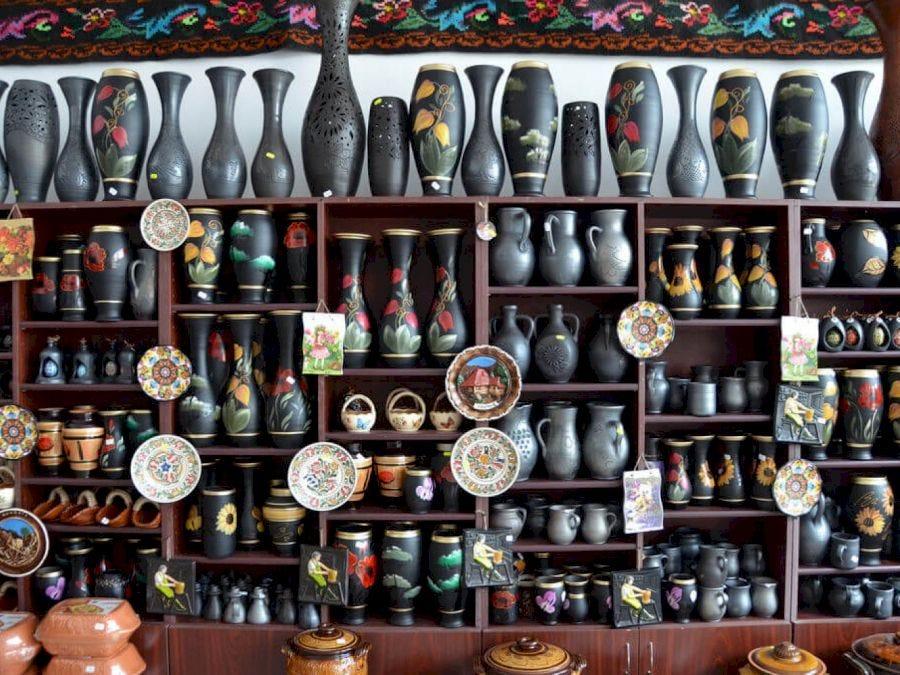
7. Shop for black ceramics in Marginea village
In the village of Marginea you can see local artisans using an ancient burning technique to create black ceramic. As you do that, remember that training in this craft starts as early as 7-8 years of age and that the method and the patterns are unique.
You'll find lots of artisan workshops and shops with various objects, from decorative to cookware, small utensils and so on. Buying one from here will directly support the local community while you walk away with an impressive - and useful - Romanian souvenir.
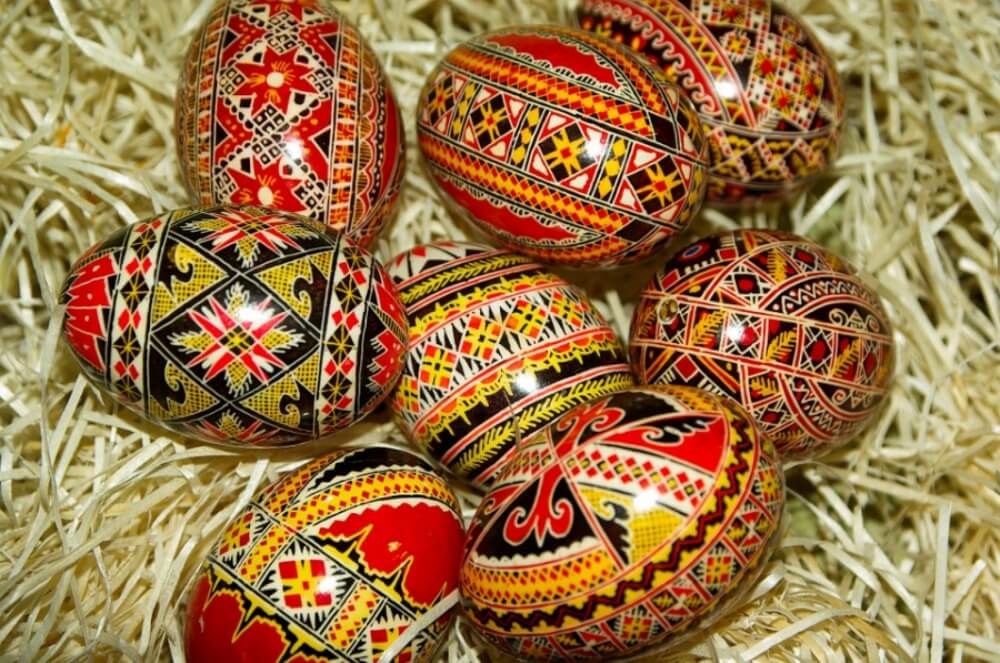
8. Admire painted eggs... what?
Painting eggs is a folk tradition that has been taken to another level in Bucovina, especially during Easter celebrations. The paint, technique, dedication and focus needed to master this technique is truly impressive.
But if you can't come during this celebration - because everything is fully booked! - then pay a quick visit to the Egg Museum in Vama. You'll see the best local artists and their intricate work displayed here. There is another painted egg museum in Moldovita and even the National Festival Of Painted Eggs in Ciocanesti village (usually in March-April, before Easter).
On some occasions there are egg painting workshops taking place in the region. These are hard to predict but if you're lucky and go with a knowledgeable guide, you might attend one.
9. Go on a ride on Moldovita steam train
Similar to the Mocanita steam train in Maramures, Bucovina has it's own, called Moldovita or Mocănița Huțulca.
Going through an picturesque valley passing through villages, riverbeds and forests, this slow moving wood-powered train will show you a picturesque side the region. The track is only 12km long which means it's a 1h ride or so - totally worth it! Check more info here.
10. Drive on the scenic Transrarāu Highway
The entire natural area of the Bucovina region is magnificent. But the scenic alpine road, known as the Transrarāu Highway, is a must-see for any traveler.
Not only does the road offer incredible views, but it will also take you through Bicaz Gorges (Cheile Bicazului) and the Red Lake, the only natural dam lake in Romania. You will enjoy both the journey and the destination.
11. Go on village walks or hiking
As you'll see, Bucovina is incredibly picturesque with a varied geography. From lots of hills with mountain villages to medium mountains (up to 1,500) and even high ones going up to Rodnei Mountains and Pietrosu Peak at 2,303m high.
The villages of Sadova, Moldovita, Paltinu and Ciocanesti are great places to go on picturesque village walks - and these are our favorites.
12. Discover the folk traditions in Bucovina
It will only take you one trip to understand Romanian traditions and not confuse them with those of neighboring countries in Eastern Europe. And if you are planning a trip to Bucovina, you have such a rich folklore to explore.
Locals here are big fans of folk dances and there's no public event or private celebration without one. The steps are easy to learn, and the music is lively - so join in, have no fear, locals will quickly teach you!
Christmas and New Year traditions You might have to wrestle with the locals for a seat to witness the wonderful winter celebrations and traditions.
From caroling, where people go from house to house to sing old carols and spread the news of Christ’s birth, are welcomed in the host’s home and served delicious festive food, to the loud and lively New Year’s traditions including Ursul (the Bear) where mostly kids and young men dress up in bear skins, dance and play instruments, or_ Capra_ (the Goat) where wishes of a fruitful new year are made.
Bucovina is a fascinating place to enjoy Easter. As we have already mentioned, the Easter eggs tradition has a life of its own. But on the Lord’s Resurrection night, people go to church, sing religious songs, and light up their candles with the Holy Light. Every street surrounding a church is lively and lit up. And the painted monasteries take center stage!
13. Enjoy traditional hospitality and cuisine in Bucovina
Get ready to become a fan of local dishes! Traditional cuisine is filling, generous and home-cooked by locals eager to show you the best of their best. You have sarmale (seasoned minced meat with rice, rolled in sweet cabbage or sauerkraut leaves), sour soups called ciorba (like ciorba de burta - tripe sour soup, ciorba de perisoare - meatball sour soup, or Radauti sour soup), trout in lute, porcini with sour cream, alivenci (cheese pie), tochitura bucovineana (pork stew with hot polenta) and more.
And since you have come all this way, you cannot leave without trying the traditional shepherd's cheese, typically paired with polenta.
Then, pair this delicious food with some of the best sweet wines. The region is renowned for its vineyards and aromatic wines. We recommend you try the local white wine - but don't say no to tuica - the traditional spirit.
***
Come for the painted monasteries and Easter egg museums, and stay for the natural beauty, the rich history, and delicious food. As experienced travel guides with a deep love for the Bucovina region, we recommend you take your time, slow-travel your way, and truly enjoy this soul enriching experience.
4 times a year we prepare a newsletter with local stories, places and our special insights about Romanian culture and local life that will inspire you to visit our country and have an authentic local experience. Would you like to get it?
